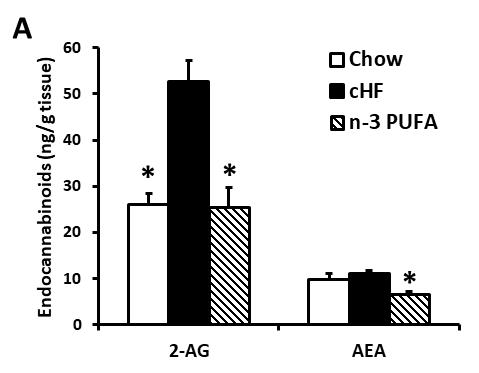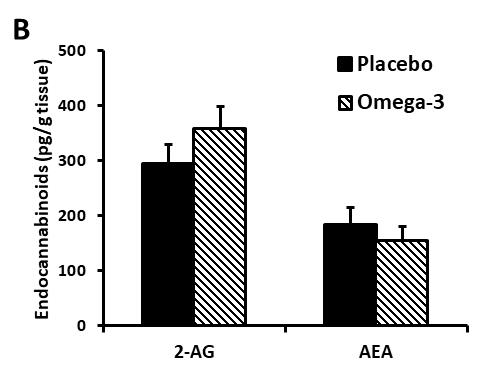|
|
|
Close Help | ||||||||||||||
Increased intake of n-3 polyunsaturated fatty acids can ameliorate impaired glucose homeostasis in model experiments on obese mice, but has no effect in human patients with type 2 diabetes. This difference could reflect in part dissimilar regulation of endocannabinoid system activity in adipose tissue.
Enlarged dysfunctional adipose tissue in obesity is closely linked to the development of insulin resistance, low-grade inflammation and metabolic disorders in other tissues, primarily through excessive release of fatty acids into the bloodstream and the production of mostly pro-inflammatory cytokines and lipid mediators from adipose tissue. Endocannabinoids are lipid mediators that regulate food intake, energy balance as well as glucose and lipid homeostasis, and they are also produced in adipose tissue. In obesity, the endocannabinoid system becomes dysregulated at the whole body level, including adipose tissue. The new study shows that in mice with high-fat diet-induced obesity long-term supplementation of n-3 polyunsaturated fatty acids (n-3 PUFA), i.e. EPA and DHA, is capable of reducing the levels of major endocannabinoids 2-AG and AEA in adipose tissue, in accordance with improved parameters of glucose homeostasis. In contrast, dietary intervention with n-3 PUFA of the same type and duration failed to decrease endocannabinoid levels both in adipose tissue and serum of overweight/obese type 2 diabetic patients. These results indicate that the inability of n-3 PUFA to reduce the levels of classical endocannabinoids might contribute to a lack of beneficial effects of EPA and DHA on glucose homeostasis in diabetic patients. This was a collaborative project between the Institute of Physiology CAS and the Institute for Clinical and Experimental Medicine.



Differential effect of n-3 PUFA administration for 24 weeks on adipose tissue levels of major endocannabinoids 2-AG (results were divided by 10 for clarity) and AEA in obese mice (A) and type 2 diabetic patients (B). Chow, standard diet; cHF, high-fat diet; n-3 PUFA, HFD supplemented with EPA+DHA; Placebo, patients supplemented with corn oil; Omega-3, patients supplemented with n-3 PUFA. *, significant difference vs. HFD. (Analyses done at the Institute of Physiology CAS).
Rossmeisl, M. – Pavlisova, J. – Janovska, P. – Kuda, O. – Bardova, K. – Hansikova, J. – Svobodova, M. – Oseeva, M. – Veleba, J. – Kopecky, J. Jr. – Zacek, P. – Fiserova, E. – Pelikanova, T. – Kopecky, J.: Differential modulation of white adipose tissue endocannabinoid levels by n-3 fatty acids in obese mice and type 2 diabetic patients. BBA-Mol Cell Biol L. 2018, 1863(7):712-725. doi: 10.1016/j.bbalip.2018.03.011.